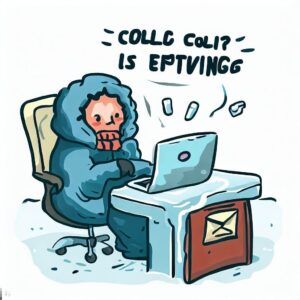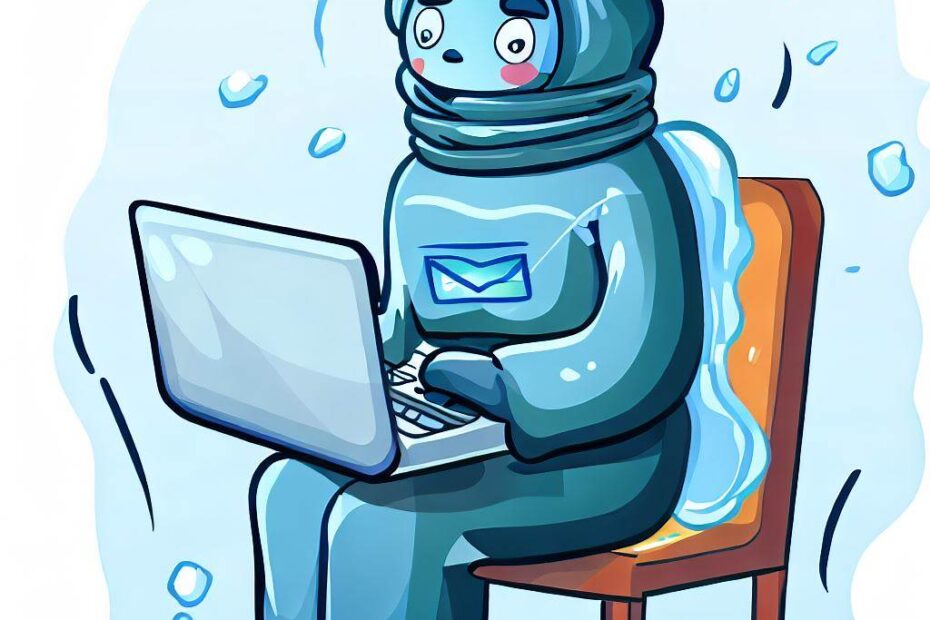Is cold emailing effective nowadays? Cold emailing is a widely used marketing strategy that involves sending unsolicited emails to potential customers to generate leads and sales. Despite its popularity, the effectiveness of cold emailing has been a subject of debate among marketers for many years. While some consider it an outdated and ineffective method, others believe in its success rate. In this context, it is worth exploring what research says about the effectiveness of cold emailing.
The Definition of Cold Emailing
Cold emailing is a marketing strategy that involves sending unsolicited emails to recipients who haven’t given prior permission or expressed an interest in receiving such messages. In other words, it is the practice of sending commercial email messages to people whom you have no prior relationship with. The purpose of cold emailing is to promote your products or services, generate leads, and increase sales.
The key difference between cold emailing and other types of email marketing is that cold emails are not sent to a pre-existing subscriber list. Instead, they are sent to individuals or organizations who may be potential customers based on their demographics, interests, or behaviors. This means that cold emailing requires careful research and targeting to ensure that the right message reaches the right people.
Despite its potential benefits, cold emailing can also be challenging. Many people receive hundreds or even thousands of emails each day, which means that it can be difficult to get your message noticed. Additionally, some people may view cold emailing as spammy or intrusive, which can damage your brand’s reputation. To overcome these challenges, it’s important to focus on creating high-quality emails that are targeted, personalized, and relevant to the recipient’s needs and interests.
Cold emailing can be an effective marketing strategy when done correctly. By focusing on research, targeting, personalization, and relevance, you can create high-quality emails that engage potential customers, generate leads, and increase sales. However, it’s important to remember that cold emailing should always be ethical and respectful of the recipient’s privacy and preferences. With these principles in mind, you can use cold emailing to grow your business and achieve your marketing goals.

The Benefits of Cold Emailing
Cold emailing offers various benefits as a marketing strategy. The most prominent advantage is its cost-effectiveness compared to traditional advertising methods such as TV commercials or print ads. Cold emailing can be done with a minimal budget, making it an excellent option for small businesses or startups with limited resources. Additionally, the costs incurred in cold emailing are generally only related to creating and sending emails, which makes it easier to track expenses and ensure that your marketing efforts remain within your budget.
Another significant benefit of cold emailing is its potential to target specific individuals or organizations based on their interests or needs. Unlike other types of marketing, cold emailing allows you to reach out to prospects who are more likely to be interested in your products or services. This personalized approach can help you increase your conversion rates and generate more leads than if you were targeting a broader audience.
Cold emailing also offers the flexibility to test and refine your messaging and targeting strategies continuously. You can experiment with different subject lines, email templates, and calls-to-action to see what works best for your audience. This process of trial and error can help you refine your approach over time, leading to better results and higher ROI.
Using cold emailing as a marketing strategy offers several advantages, including cost-effectiveness, targeted outreach, and flexibility. By leveraging these benefits and continually refining your approach, you can maximize the effectiveness of your cold emailing campaigns and achieve your marketing goals. However, it’s crucial to follow ethical guidelines when cold emailing and respect the privacy and preferences of your prospects. With these principles in mind, cold emailing can be a powerful tool to grow your business and reach new customers.

The Drawbacks of Cold Emailing
While cold emailing has several potential benefits, there are also some drawbacks to consider. One of the most significant challenges is getting your email noticed and opened by the recipient. With people receiving hundreds or even thousands of emails daily, it can be difficult to capture their attention and stand out among the crowd. This is why crafting an engaging subject line and personalized message is crucial in increasing the chances of having your email opened.
Another challenge with cold emailing is that it can sometimes be viewed as intrusive or spammy by recipients. If you don’t have prior permission or a pre-existing relationship with the recipient, they may view your email as unwelcome or irrelevant. This could lead to negative associations with your brand, which can damage your reputation and hurt your business in the long run.
To overcome these challenges, it’s essential to approach cold emailing with care and consideration. Focus on creating high-quality emails that are tailored to the recipient’s interests and needs. Use personalized greetings and avoid generic language to increase the chances of building a connection with your prospect. Additionally, be sure to follow ethical guidelines such as including an easy opt-out option and avoiding misleading or deceptive claims.
Despite its potential benefits, cold emailing as a marketing strategy does have some drawbacks to consider. However, by focusing on crafting targeted, personalized emails and following ethical guidelines, you can increase the likelihood of success while minimizing any potential negative impacts. Ultimately, cold emailing can be an effective tool for generating leads and growing your business, but it must be approached thoughtfully and strategically.

Research Findings
There have been several studies conducted to determine the effectiveness of cold emailing as a marketing strategy. One notable survey by SalesIntel found that nearly 50% of B2B sales professionals believe that cold emailing is an effective way to generate leads. Another study by HubSpot discovered that personalized emails sent to targeted prospects received a 29% higher open rate and a 41% higher click-through rate compared to standard marketing emails.
While these studies suggest that cold emailing can be an effective marketing tool, it’s important to note that they are based on self-reported data and may not reflect the overall effectiveness of cold emailing. Other factors such as industry type, audience demographics, and message content can also influence the success rate of cold emailing.
Furthermore, the General Data Protection Regulation (GDPR) implemented in the European Union reduces the efficacy of cold emailing as a marketing strategy for businesses operating within the territory. The regulation requires companies to obtain explicit consent from individuals before sending them any commercial electronic messages, which includes cold emails.
While these studies offer valuable insights into the potential effectiveness of cold emailing, it’s essential to approach this marketing strategy with caution and take steps to ensure compliance with relevant regulations and ethical standards. By targeting specific individuals or organizations, crafting personalized messages, and following ethical guidelines, you can increase the likelihood of success when using cold emailing to generate leads and grow your business.

The Role of Personalization
Personalization is a crucial factor that can significantly impact the effectiveness of cold emailing as a marketing strategy. A personalized email can establish a connection with the recipient and make them more likely to respond positively. According to research conducted by Experian, personalized emails receive a 29% higher open rate and a 41% higher click-through rate than non-personalized emails. Additionally, a study by Aberdeen revealed that personalized emails have an average conversion rate of 10%, compared to just 3% for non-personalized emails.
Personalization goes beyond inserting the recipient’s name or company into the email; it involves crafting messages that resonate with their interests, needs, and pain points. By segmenting your email list based on relevant criteria such as industry, job title, or behavior, you can tailor your message to each recipient’s unique situation. This targeted approach can increase the likelihood of engagement and response rates.
Furthermore, personalization can also extend to the design and layout of your emails. Utilizing visual elements that are specific to the recipient’s preferences or interests can create a sense of familiarity and relevance, which can further encourage engagement.
Personalization is a key factor in the success of cold emailing as a marketing strategy. By tailoring your message to the recipient’s interests, needs, and pain points, you can establish a connection and increase the likelihood of engagement and response rates. By following ethical guidelines and utilizing targeted and personalized approaches, you can maximize the effectiveness of cold emailing as a tool for generating leads and growing your business.

Conclusion
So, is cold emailing effective? The answer is yes – but it depends on several factors, including the quality of your email, the relevance of your message, and the level of personalization. While many people view cold emailing as an outdated or ineffective method, research suggests that it can be a valuable tool for generating leads and sales when done correctly. To maximize your chances of success, it’s important to focus on crafting high-quality emails that are tailored to the recipient’s needs and interests.
Sources
- SalesIntel: https://salesintel.io/resources/how-to-use-cold-emailing-for-b2b-lead-generation/
- HubSpot: https://blog.hubspot.com/sales/beyond-the-first-touch-how-to-write-a-killer-prospecting-email
- Experian: https://www.experian.com/marketing-services/email-marketing/best-practices/personalization
- Aberdeen: https://www.aberdeen.com/featured/research-content/personalization-email-marketing/
